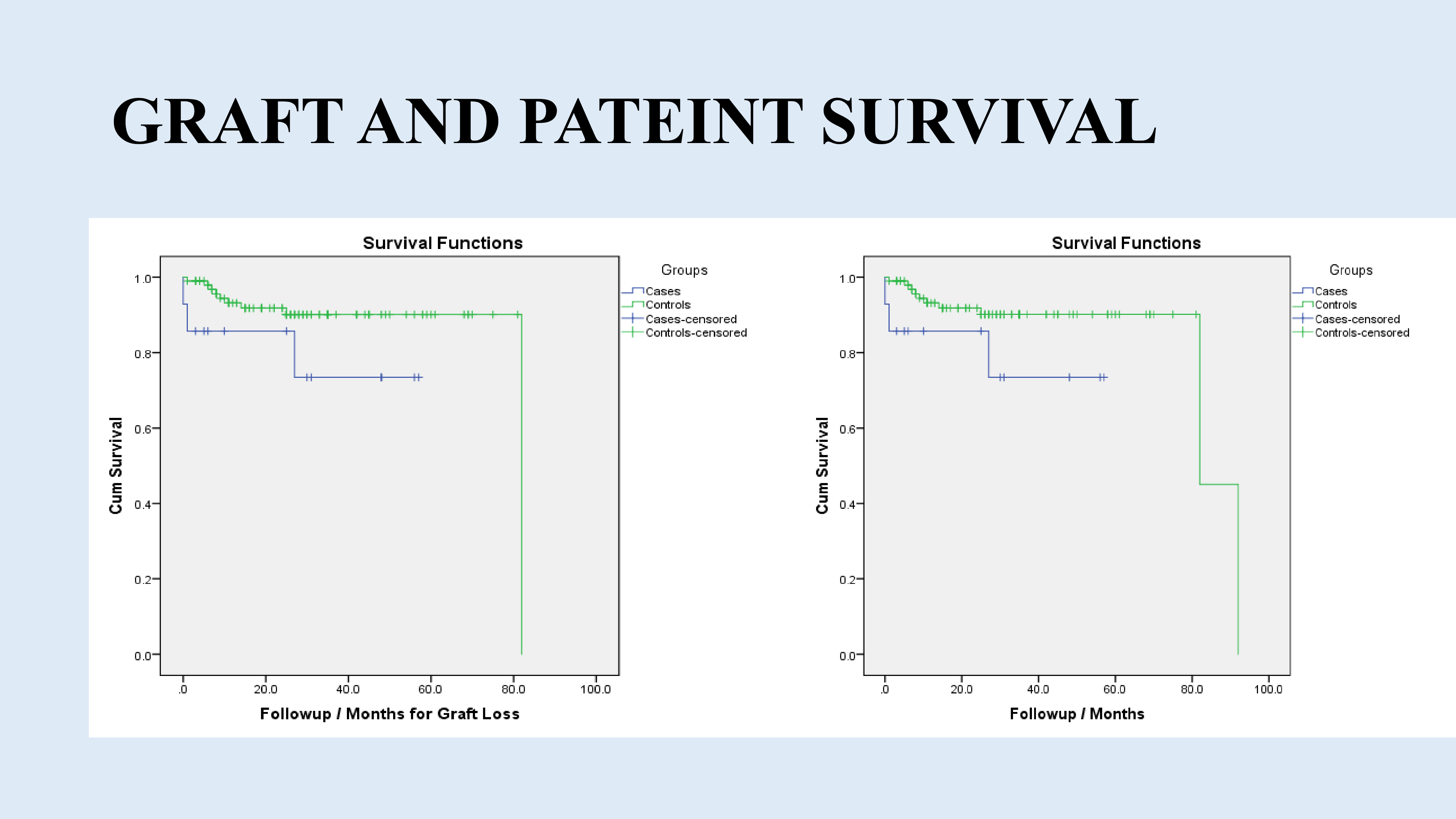head and Associate Professor
Department of Pediatric Nephrology
Smt. GR Doshi and Smt. KM Mehta Institute of Kidney Diseases and Research Center, Gujarat university of Transplantation Sciences
Outcome of low-body-weight pediatric kidney transplant recipients: A retrospective comparative analysis from single centre
Suman Chowdhary1, Kinnari Vala1, Shahenaz Kapadia1, Anshuman Saha1, Disha Bhatt1, Suresh Kumar2.
1Pediatric Nephrology and Kidney Transplantation, Smt. GR Doshi and Smt. KM Mehta Institute of Kidney Diseases and Research Center, GUTS, Ahmedabad, India; 2Urology, Smt. GR Doshi and Smt. KM Mehta Institute of Kidney Diseases and Research Center, GUTS, Ahmedabad, India
Background: Pediatric kidney transplantation (pKT) in children weighing ≤15 kg presents distinct medical and surgical challenges that may impact morbidity and graft survival. While Western studies report comparable outcomes between low and higher body weight recipients, advancements in surgical techniques and immunosuppressive strategies have improved feasibility. However, data specific to the Indian population remain limited. This retrospective study evaluates complications and outcomes of pKT in recipients ≤15 kg versus >15 kg at a single center.
Aims: This study aims to compare short- and long-term medical and surgical complications in pediatric kidney transplant recipients weighing ≤15 kg and >15 kg, with an emphasis on evaluating differences in graft survival and patient outcomes between these cohorts.
Materials and Methods: A retrospective observational study was conducted, reviewing paediatric kidney transplant data from September 2016 to July 2024 at our institute. Demographic, perioperative, and postoperative information of both donors and recipients was collected. Complications were categorized as early and late and further analysed. Final outcomes were evaluated in terms of graft and patient survival.
Results: Of the 125 paediatric kidney transplants performed, 14 involved patients weighing ≤15 kg. The mean age of these children was 7.7 years, with an average weight of 14.1 kg. CAKUT was the most common underlying condition in both groups. Notably, 64% of the ≤15 kg group required 5% albumin as a volume expander during surgery, compared to 16% in the >15 kg group (p value-0.001). Postoperative surgical complications occurred in 21% of the ≤15 kg group, while 57% experienced infections, predominantly viral. Graft survival at 1, 3, and 5 years was 100% for the ≤15 kg group and 96%, 93%, and 90% respectively for the >15 kg group. Mortality was low in both groups, with 3/14 deaths in the ≤15 kg group and 10/101 in the >15 kg group. No statistically significant difference in graft and patient survival was observed.

Conclusion: Kidney transplantation in children weighing ≤15 kg is feasible and safe, with long-term outcomes comparable to those of children weighing >15 kg. A multidisciplinary approach and customized surgical techniques are key to achieving these favourable outcomes.
